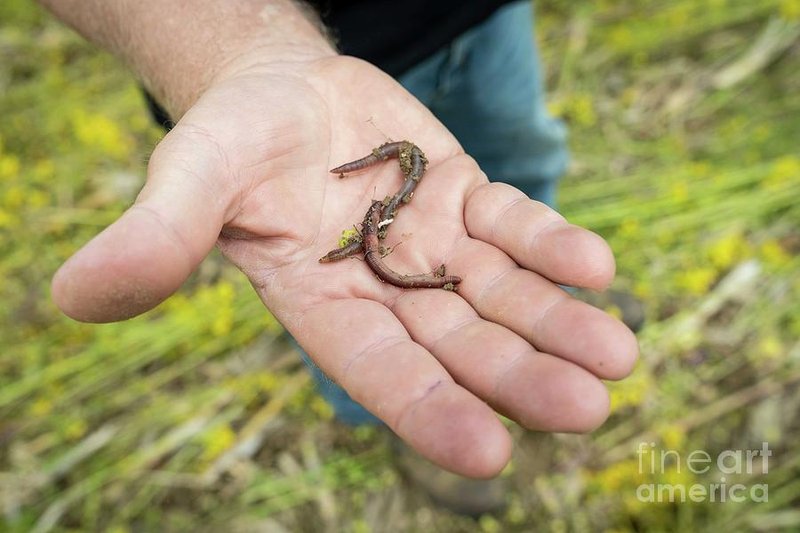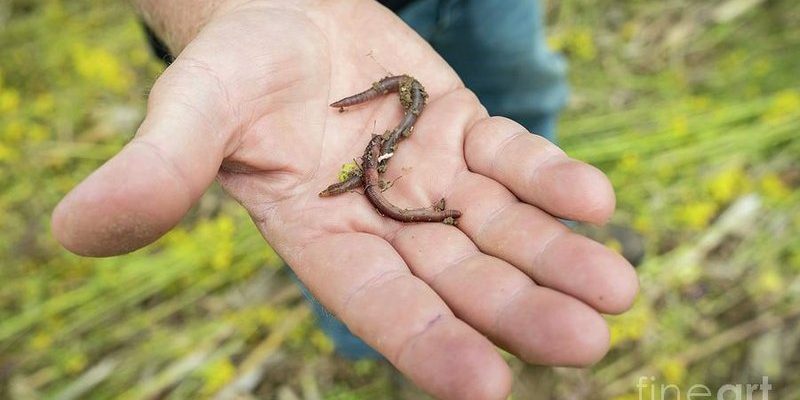
So, what exactly is no-till farming? Simply put, it’s a method where farmers skip the traditional practice of plowing the land. Instead of turning the soil over, they plant directly into the undisturbed topsoil. This approach helps preserve soil structure, retains moisture, and reduces erosion—benefits earthworms appreciate as much as the plants do! In this article, we’ll explore how earthworms contribute to no-till farming systems, why they matter, and how you can encourage them in your own farming practices.
What Are Earthworms and Why Are They Important?
Earthworms are fascinating little creatures, usually found in dark, moist soil. They may be small, but they have a big impact on the environment. Earthworms digest organic material like dead leaves and decaying plants, turning it into rich, nutrient-dense castings. These castings—essentially worm poop—act like natural fertilizers, providing essential nutrients for plants.
Here’s the thing: earthworms are nature’s recyclers. They break down organic matter and improve soil health by aerating it. When they tunnel through the soil, they create channels that allow air and water to reach plant roots more easily. This is especially crucial in no-till farming, where the soil structure remains undisturbed, benefiting both the worms and the crops.
But it doesn’t stop there! Earthworms also enhance biodiversity in farming systems. Their presence indicates healthy soil and helps support a variety of other organisms. Think of them as a sign that your garden or field is thriving.
The Role of Earthworms in No-Till Farming
In no-till farming systems, earthworms are more than just helpful—they’re essential. Without plowing, the soil stays intact, allowing earthworms to thrive. Their natural activities improve soil structure, making it easier for plants to establish roots. This not only boosts crop yields but also contributes to a healthier ecosystem.
Another benefit of earthworms in no-till systems is their ability to improve nutrient cycling. They pull organic matter down into the soil, where it can decompose more efficiently. This means that as plants grow, they have access to a steady supply of nutrients, which can lead to healthier, more robust crops.
Farmers practicing no-till methods report better water retention in their fields and reduced need for chemical fertilizers, thanks to the work earthworms do. It’s a win-win for both farmers and the environment!
How to Encourage Earthworms in Your Farming Practices
If you’re looking to boost your earthworm population in a no-till system, there are several simple steps you can take. Here’s a quick rundown of some effective strategies:
- Maintain organic matter: The more organic material you have, the happier your worms will be. Leave crop residues on the field and consider adding compost or mulch to enrich the soil.
- Avoid chemical pesticides: Chemicals can harm earthworm populations. Opt for organic pest control methods whenever possible.
- Practice crop rotation: Rotating crops helps improve soil health and supports a diverse environment for earthworms to thrive.
- Monitor soil moisture: Earthworms prefer moist environments, so keeping the soil adequately watered can encourage their presence.
By incorporating these practices, you can create a welcoming habitat for earthworms, directly contributing to the success of your no-till farming efforts.
Earthworms vs. Traditional Tillage: A Comparison
You might be wondering how earthworms fare in traditional tillage systems compared to no-till. Well, there’s a notable difference in the benefits provided by earthworms in these two approaches.
In traditional tillage, the soil is regularly disturbed, which can negatively affect earthworm populations. Tilling destroys their habitats, disrupts their life cycles, and can even kill them. As a result, farmers often have to rely more on chemical fertilizers to support their crops, which can lead to soil depletion over time.
In contrast, no-till systems give earthworms the protection they need to flourish. The undisturbed soil creates a more stable environment, allowing them to aerate the soil naturally and contribute nutrients without the need for synthetic additives. Ultimately, no-till is a better friend to earthworms and, by extension, healthier for the soil.
The Environmental Impact of Earthworms in No-Till Systems
The benefits of earthworms in no-till farming extend beyond just improved crop yields. They also play a significant role in promoting sustainability and environmental health. By reducing soil erosion and maintaining soil structure, earthworms help combat one of the biggest environmental challenges in agriculture.
Moreover, earthworms contribute to carbon sequestration. As they break down organic matter, they help transfer carbon from the atmosphere into the soil, which is crucial for mitigating climate change. So, when farmers integrate earthworms into no-till systems, they’re also taking important steps toward protecting our planet.
Additionally, earthworms facilitate better water infiltration, reducing runoff and promoting cleaner waterways. Healthy soil rich in earthworms can hold more water, which is a huge benefit in times of drought.
Challenges and Considerations When Working With Earthworms
While earthworms are incredibly beneficial, there are some challenges to consider. For instance, not all earthworm species are created equal. Some can actually be invasive and may disrupt the local ecosystem. It’s vital to ensure you’re fostering the right species in your fields.
Another consideration is the balance between earthworm populations and other soil organisms. An overabundance of earthworms can sometimes lead to an imbalance, which could negatively impact your ecosystem as well. Regular monitoring and a diverse soil management strategy can help keep things in check.
Ultimately, while earthworms provide tremendous benefits to no-till systems, understanding their role and managing their populations wisely is key.
Incorporating earthworms into no-till farming systems is not just beneficial; it’s essential for creating healthier soils and more productive crops. These little creatures perform a multitude of tasks, from enriching the soil with nutrients to improving water retention and promoting biodiversity.
By adopting no-till practices and encouraging earthworm populations, farmers can help push the agriculture industry towards a more sustainable future. It’s a win for the earth, the crops, and the farmers. So next time you think about farming, don’t just look at the surface—remember that an entire ecosystem, complete with earthworms, is hard at work beneath your feet!

